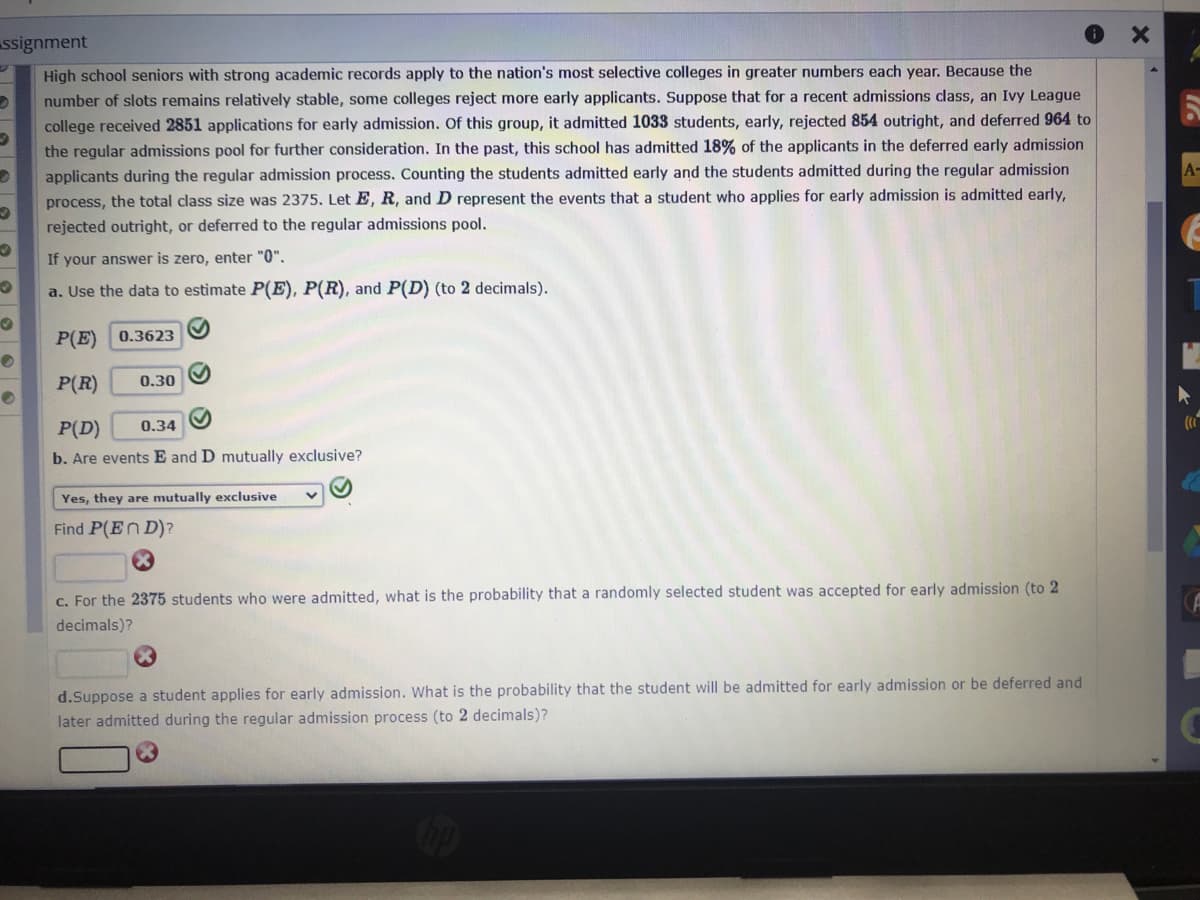High school seniors with strong academic records apply to the nation's most selective colleges in greater numbers each year. Because the number of slots remains relatively stable, some colleges reject more early applicants. Suppose that for a recent admissions dass, an Ivy League college received 2851 applications for early admission. Of this group, it admitted 1033 students, early, rejected 854 outright, and deferred 964 to the regular admissions pool for further consideration. In the past, this school has admitted 18% of the applicants in the deferred early admission applicants during the regular admission process. Counting the students admitted early and the students admitted during the regular admission process, the total class size was 2375. Let E, R, and D represent the events that a student who applies for early admission is admitted early, rejected outright, or deferred to the regular admissions pool. If your answer is zero, enter "0". a. Use the data to estimate P(E), P(R), and P(D) (to 2 decimals). P(E) 0.3623 P(R) 0.30 P(D) 0.34 b. Are events E and D mutually exclusive? Yes, they are mutually exclusive Find P(En D)? C. For the 2375 students who were admitted, what is the probability that a randomly selected student was accepted for early admission (to 2 decimals)? d.Suppose a student applies for early admission. What is the probability that the student will be admitted for early admission or be deferred and later admitted during the regular admission process (to 2 decimals)?
Correlation
Correlation defines a relationship between two independent variables. It tells the degree to which variables move in relation to each other. When two sets of data are related to each other, there is a correlation between them.
Linear Correlation
A correlation is used to determine the relationships between numerical and categorical variables. In other words, it is an indicator of how things are connected to one another. The correlation analysis is the study of how variables are related.
Regression Analysis
Regression analysis is a statistical method in which it estimates the relationship between a dependent variable and one or more independent variable. In simple terms dependent variable is called as outcome variable and independent variable is called as predictors. Regression analysis is one of the methods to find the trends in data. The independent variable used in Regression analysis is named Predictor variable. It offers data of an associated dependent variable regarding a particular outcome.

Trending now
This is a popular solution!
Step by step
Solved in 3 steps with 7 images






